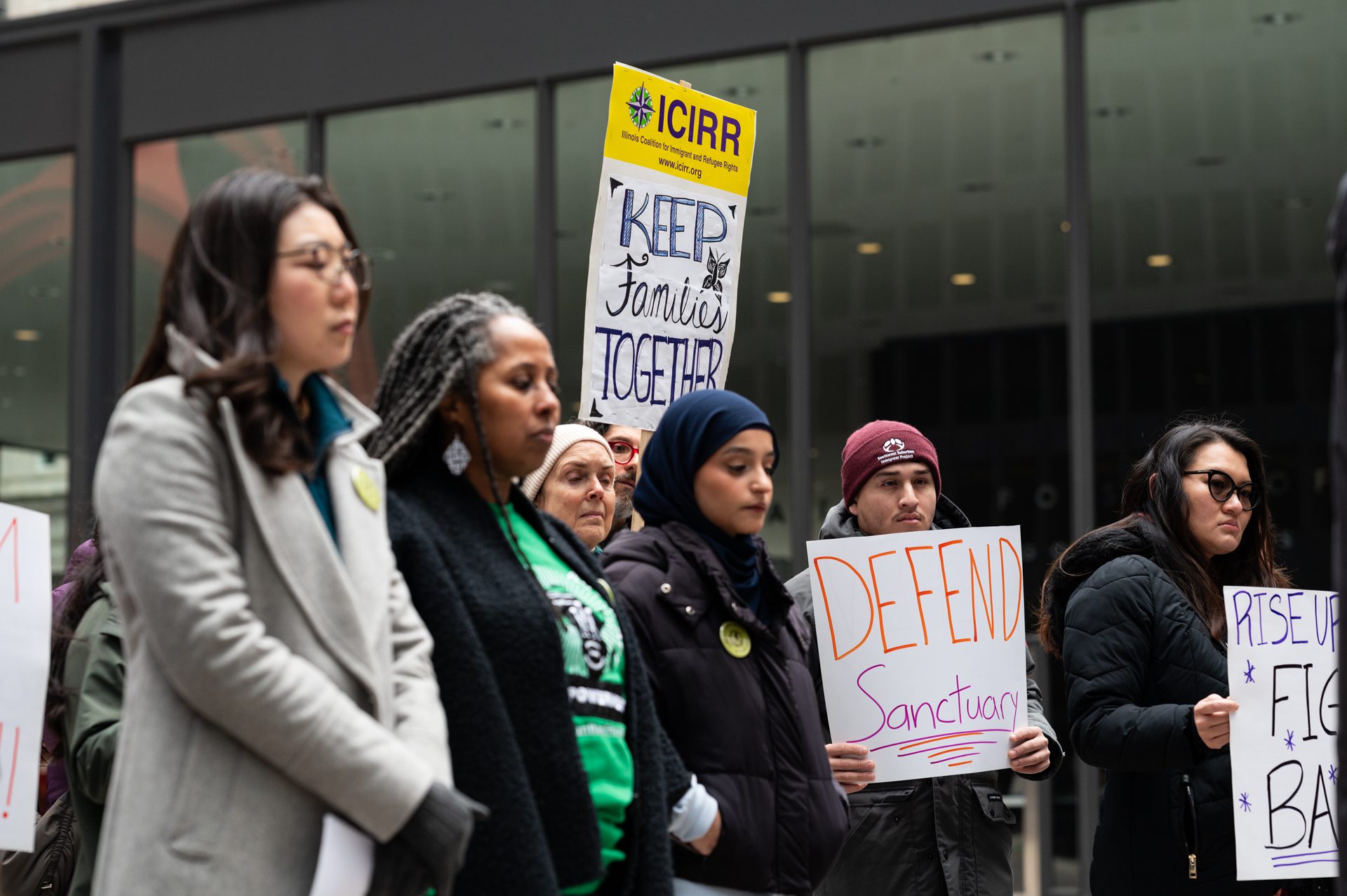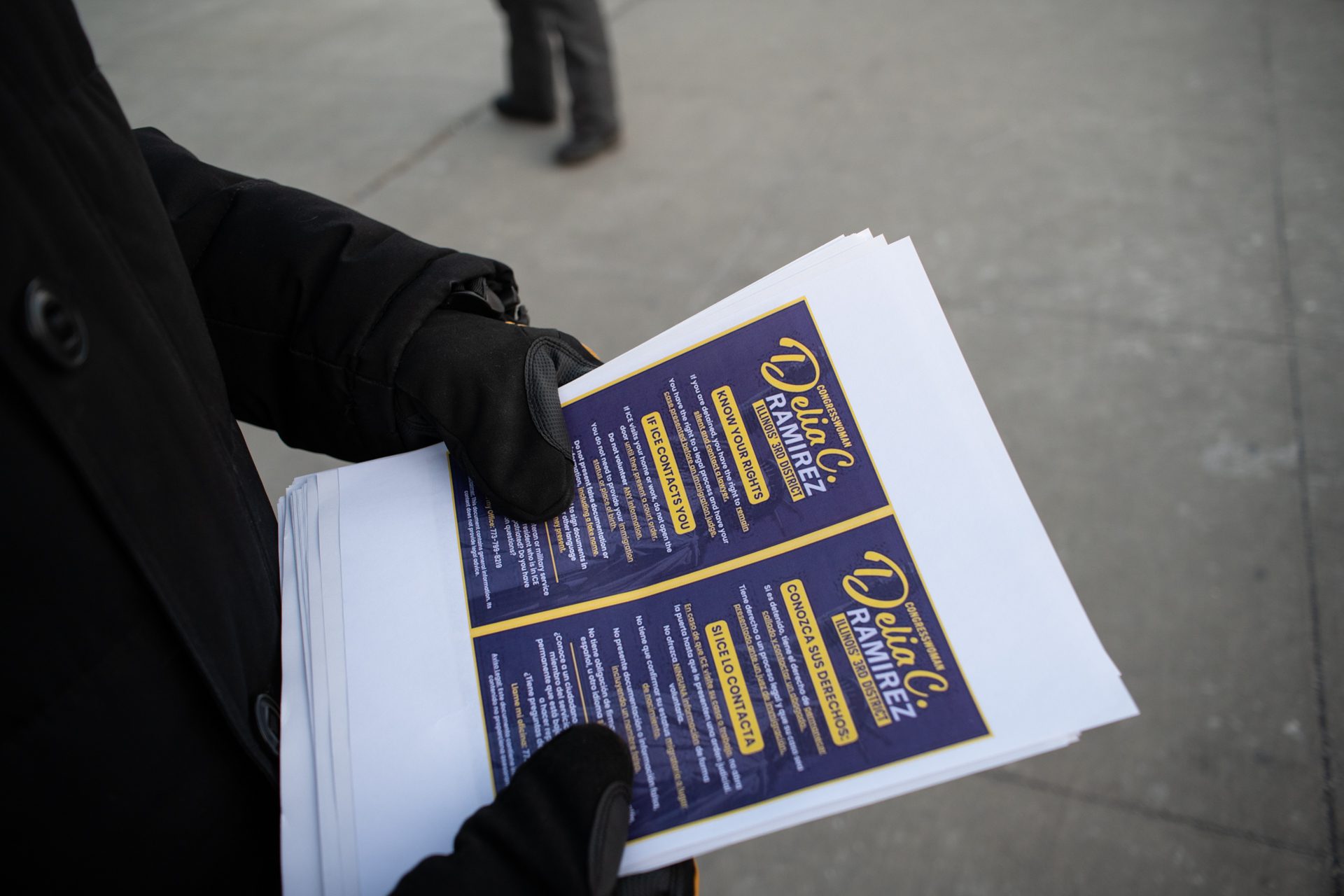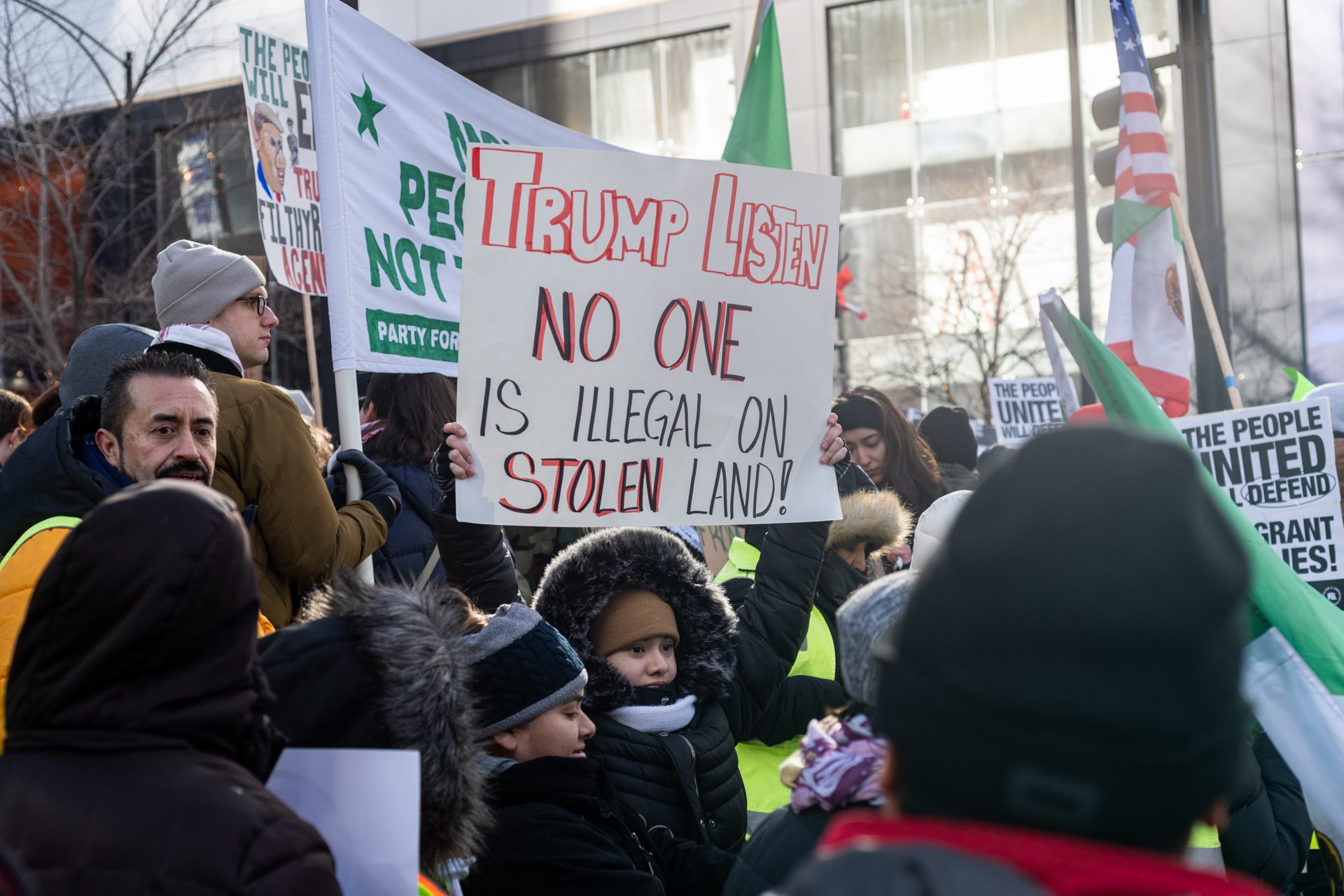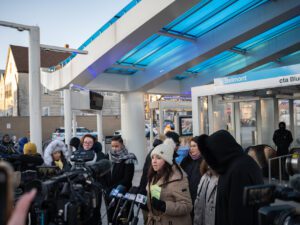 Max Herman/Borderless Magazine
Max Herman/Borderless MagazineAs President Donald Trump’s administration marks 100 days, immigrant organizations say they are expanding advocacy efforts and ramping up demonstrations in Chicago.
In his first 100 days in office, President Donald Trump’s immigration agenda has faced countless challenges in federal courts, with much legal resistance coming from sanctuary cities like Chicago.
Meanwhile, immigrant organizations have doubled down on their advocacy since Trump stepped into office.
“In the face of this environment that is seeking to create a sense of constant fear in people, regular everyday neighbors and everyday people are coming together to build a stronger community, to protect one another,” said Brandon Lee, communications director for the Illinois Coalition for Immigrant and Refugee Rights.
News that puts power under the spotlight and communities at the center.
Sign up for our free newsletter and get updates twice a week.
Since his inauguration, Trump’s top priority has been immigration enforcement. In his first 100 days, Trump has issued 175 executive orders — unprecedented in recent history — to overhaul the nation’s current immigration system, according to an analysis by the nonpartisan research group, Migration Policy Institute.
These changes include:
- limiting noncitizens’ access to government benefits and refugee and asylum programs;
- increasing scrutiny toward green card holders and visa applicants;
- decreasing access to legal statuses such as Temporary Protected Status and parole;
- directing non-immigration-related federal agencies toward immigration enforcement; and
- expanding immigration detention both domestically and, most notably, to a terrorism confinement center in El Salvador
Trump has also taken aim at immigration judges, lawyers representing immigrants and asylum seekers, and organizations challenging his administration’s new policies in court. In late March, Trump signed a memo directing the U.S. attorney general to discipline attorneys and law firms who “engage in frivolous, unreasonable, and vexatious litigation against the United States.”
The actions have impacted Chicago schools, businesses, churches and homes in neighborhoods with high immigrant populations. Fears of deportation and ICE raids among immigrant communities without legal status have led to the cancellation of large events such as Little Village’s annual Cinco de Mayo parade, as well as a decrease in foot traffic in immigrant-heavy neighborhoods.
In response, Know Your Rights workshops led by immigrant advocacy groups and elected officials have popped up in churches, libraries and community centers across the city.

On the Southwest Side, for example, Brighton Park Neighborhood Council members have hosted in-person and virtual trainings to inform their neighbors about their rights regardless of immigration status. More than 1,000 community members have taken part in the sessions, according to BPNC Executive Director Patrick Brosnan.
In an interview with CNN in January, Border Czar Tom Homan acknowledged the impact of Chicago’s Know Your Rights efforts to challenge the administration’s goals of arresting noncitizens with criminal convictions.
“Chicago [is] very well educated; they’ve been educated how to defy ICE, how to hide from ICE,” Homan said in January. “They call it ‘Know Your Rights.’ I call it how to escape arrest.”
Still, Chicagoans have been impacted by Trump’s deportation efforts, including the family of Yeison Rodrigo Jaimes-Rincon, whose wife found out he had been deported to El Salvador through a video, and Abel Orozco Ortega, who ICE arrested while he was on his way back from picking up tamales for himself and his wife.
Read More of Our Coverage
In response, some community organizations such as Organized Communities Against Deportations (OCAD) and ICIRR have expanded their “Rapid Response Networks.” These include coalitions of neighbors and volunteers who follow up on suspected ICE activity to confirm ICE presence and inform local residents of their rights and of potential threats.
Antonio Gutierrez, co-founder of OCAD, said the organizations connecting their Rapid Response Networks have expanded to 28 neighborhoods in response to increased ICE presence in Trump’s first 100 days.
“What we have understood is that the only people that will keep us safe is us,” Gutierrez said. “We are creating networks like the Rapid Response Networks in order to keep each other safe.”
Gutierrez noted an increase in calls to their Family Support Network hotline since Jan. 20, with 100 to 150 daily calls about ICE raids and detainments.
Now, OCAD has expanded training and its hotline capacity from just two call responders before the inauguration to around 10 or 11.
On top of grassroots efforts to inform community members and respond to ICE activity in neighborhoods, immigrant rights groups have also teamed up with Chicago’s civil rights organizers to protest Trump’s policies.
Since Trump stepped into office, Chicago has seen tens of thousands of demonstrators speak out against Trump’s policies impacting immigrants, LGBTQ+ community members, environmental protections and Palestinians. In early April, an estimated 30,000 people marched downtown for the “Hands Off” day of protest against Trump. Two weeks later, thousands also protested as part of the national 50501 movement protesting the Trump administration.

Chicago will likely see large protests again for May Day, which historically has been a day to advocate for workers’ rights.
“This is one of those moments where our communities are going to come out and say that we are fighting back against fear,” Brandon Lee said. “We are fighting back against fear to protect immigrants, to protect students, to protect the right to education, to protect families and our neighbors.”
Members of the Japanese American activist group Nikkei Uprising will be among the many who demonstrate on May Day for civil rights.
Mitsuru Nelson, an organizer with Nikkei Uprising, said protesting is a way to push for legislative change in local and national politics, bring more people into the movement and show solidarity.
“I want other people to feel that they’re not alone,” said Nelson. “We’re here to fight for everyone.”
Nikkei Uprising is also considering how to expand and involve younger generations of Japanese Americans in its movement. It is facilitating a program called Camp Daikon that aims to connect younger Japanese Americans with their history and show them the community’s struggles in the U.S.
The goal, Nelson said, is for younger generations to connect past struggles to what’s going on in the world today.
“The more people we have in the streets, the more the people in power see that we are the ones who have the power,” Nelson said. “Then I think actual change will end up happening.”
Katrina Pham is Borderless Magazine’s audience engagement reporter. Email Katrina at [email protected].
Tara Mobasher is a Northwestern Medill Reporting fellow at Borderless Magazine. Email Tara at [email protected].
Aydali Campa is a Report for America corps member and covers environmental justice and immigrant communities for Borderless Magazine. Send her an email at [email protected].


